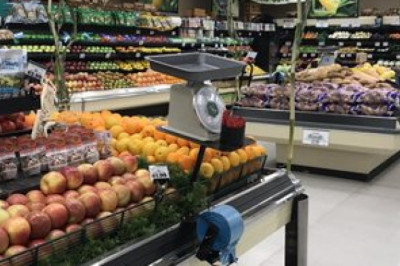views
The global forage market is on an upward trajectory, driven by growing demand for sustainable and nutrient-rich animal feed. With the increasing importance of dairy nutrition, beef production, and modern livestock practices, forage crops have become a central component of the global feed industry. Producers are increasingly turning to high-yield, climate-resilient forage silage and pasture systems to improve livestock health and productivity.
Global Forage Market size and share is currently valued at USD 875.17 million in 2024 and is anticipated to generate an estimated revenue of USD 1,449.10 million by 2034, according to the latest study by Polaris Market Research. Besides, the report notes that the market exhibits a robust 5.2% Compound Annual Growth Rate (CAGR) over the forecasted timeframe, 2025 - 2034
Market Overview
Forage refers to plant-based feed consumed by livestock, primarily grasses, legumes, and cereal crops, either grazed or harvested for feeding. As livestock and dairy production expand globally, the demand for high-quality, cost-effective forage has grown significantly. It is widely used across multiple livestock segments—dairy, beef, poultry, and equine.
With an increased focus on sustainability, forage is gaining prominence due to its role in improving soil health, sequestering carbon, and reducing reliance on commercial grain-based feeds. Moreover, forage silage—a preserved form of green forage—has emerged as a vital year-round solution for animal feed, especially in regions facing seasonal feed shortages.
Market Segmentation
The global forage market is segmented based on type, livestock, and form, offering a detailed picture of how different components contribute to overall growth.
By Type
-
Cereals (e.g., corn, sorghum)
-
Legumes (e.g., alfalfa, clover)
-
Grasses (e.g., ryegrass, timothy)
-
Others (brassicas, forbs)
Among these, alfalfa continues to dominate due to its high protein content and digestibility, making it ideal for dairy nutrition and beef cattle.
By Livestock
-
Ruminants (cattle, sheep, goats)
-
Equine
-
Poultry
-
Others
The ruminant segment is the largest consumer of forage, particularly for dairy and beef operations, where balanced nutrition from forage crops is essential for milk yield and weight gain.
By Form
-
Fresh
-
Hay
-
Silage
-
Pellets
Forage silage is increasingly favored due to its nutrient preservation and convenience, especially in large-scale commercial operations.
Browse Full Insights:
https://www.polarismarketresearch.com/industry-analysis/forage-market
Country-Wise Market Trends
United States
The U.S. is one of the most mature forage markets, with large-scale dairy and beef industries driving demand. High adoption of forage silage, particularly corn and alfalfa, has enhanced feed efficiency and herd productivity. Advanced mechanization and robust extension services support continual forage innovation.
Key trends include:
-
Shift toward precision feeding technologies
-
Increasing demand for non-GMO and organic forage
-
Government incentives for soil regeneration through cover crops
Canada
In Canada, alfalfa and timothy are key forage crops, particularly in provinces like Alberta, Saskatchewan, and Ontario. The Canadian forage market benefits from a strong export sector, with significant volumes of hay and alfalfa shipped to Asia and the Middle East.
Trends:
-
Expansion of hay exports to China and Japan
-
Focus on high-protein forage blends for winter feeding
-
Integration of forage into carbon sequestration programs
Germany
Germany, one of Europe’s agricultural powerhouses, places strong emphasis on dairy nutrition. Silage maize and grass-based forage systems dominate the landscape. Sustainability regulations encourage rotational grazing and use of forage to reduce feed imports.
Trends:
-
Increasing automation in forage harvesting
-
Research into protein-rich legumes and cover crops
-
Subsidies for climate-smart forage systems
France
France’s mixed farming system supports robust forage demand, particularly for dairy cattle. The government supports on-farm forage cultivation to reduce feed dependency. Lucerne (alfalfa) is gaining popularity for its drought resistance and nutritional value.
Trends:
-
Push for self-sufficiency in livestock feed
-
Growing adoption of bio-fermented forage
-
Emphasis on reducing methane through improved forage digestibility
China
China is rapidly developing its forage production to support its expanding dairy and beef industries. In response to food safety concerns and reliance on imports, domestic forage cultivation—especially alfalfa—is being prioritized.
Trends:
-
Large-scale investments in forage farms in Inner Mongolia and Xinjiang
-
Rising imports of high-quality alfalfa from North America
-
Emphasis on water-efficient and salt-tolerant forage varieties
India
India faces a chronic deficit of green and dry fodder. As dairy is a major contributor to the rural economy, the government has launched several initiatives to improve forage availability.
Trends:
-
Expansion of multi-cut and high-yield forage crops
-
Fodder banks and silage-making infrastructure
-
Farmer education on balancing feed rations
Brazil
Brazil’s massive beef industry drives strong demand for pasture-based animal feed. Brachiaria and Panicum grasses dominate, with increasing use of forage silage in feedlots.
Trends:
-
Adoption of integrated crop-livestock systems (ICLS)
-
Expansion of silage maize in southern states
-
Research into tropical legumes for protein supplementation
Key Companies in the Forage Market
Numerous players are contributing to innovation and scalability in the forage industry. These companies are engaged in seed development, processing technologies, and advisory services.
1. Forage Genetics International (USA)
A leader in alfalfa genetics, FGI focuses on developing high-yield, pest-resistant forage varieties. Their biotech research enables improved digestibility and drought resilience.
2. DLF Seeds A/S (Denmark)
DLF is a global giant in forage seed production, offering tailored solutions for temperate and tropical climates. Their breeding programs focus on ryegrass, clovers, and legumes optimized for livestock performance.
3. Barenbrug Group (Netherlands)
Barenbrug specializes in sustainable forage crops including perennial grasses and legumes. Their innovations support improved pasture management and reduced input requirements.
4. Corteva Agriscience (USA)
Corteva offers a wide portfolio of forage seed and silage corn hybrids. Its advanced traits promote higher protein retention, improved forage digestibility, and better disease resistance.
5. Nuseed (Australia)
Known for its innovation in grain sorghum and hybrid forages, Nuseed caters to both developed and emerging markets. Their forage varieties are tailored for dryland and irrigated systems.
6. Allied Seed, LLC (USA)
Allied Seed is a major distributor of certified forage and turfgrass seeds. Their focus on high-purity, locally adapted varieties helps meet diverse forage demands across North America.
7. Sakata Seed Corporation (Japan)
Sakata plays a key role in the Asia-Pacific forage market, offering alfalfa, sudangrass, and sorghum hybrids suitable for intensive dairy and livestock production.
Conclusion
As the global livestock industry grows in complexity and scale, the demand for efficient, high-quality, and sustainable animal feed solutions has never been greater. Forage remains the foundation of livestock nutrition—particularly in dairy, beef, and equine operations.
The increasing preference for forage silage, adoption of climate-smart agricultural practices, and innovations in seed technology are reshaping the forage landscape. Countries like the U.S., China, Germany, and Brazil are setting the pace with investments in infrastructure, research, and policy support.
Meanwhile, leading forage companies are accelerating global efforts to deliver better yields, higher nutritional value, and resilient cropping systems. As a result, the forage market is poised not only for economic growth but also for making a meaningful contribution to food security and sustainable agriculture.
More Trending Reports by Polaris Market Research:
APAC Crop Protection Chemicals Market
Non-Associated Cellulose Rheology Modifiers Market
Imidazoline Derivative Inhibitor Market
Unsaturated Polyester Resins Market
Listing Top 10 Companies in the Titanium Dioxide Market 2025
Comprehensive Overview of Leading Top 5 Firms in Industrial Rubber Market in 2025




















Comments
0 comment